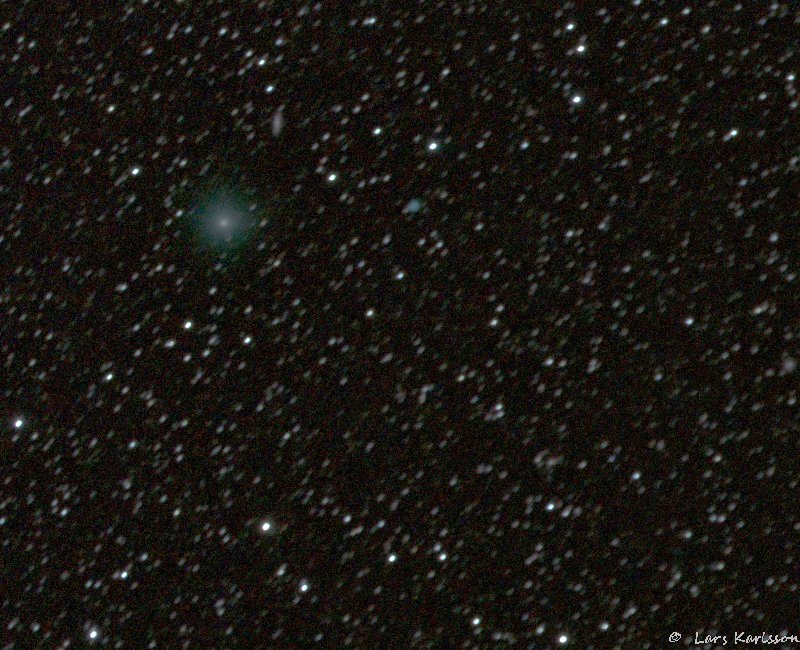| Object : | Comet, 41P Tuttle-Giacobini-Kresak 2017 |
| Coordinates/Direction : | - |
| Object size : | - |
| Object magnitude : | - |
| More to know : |
You can read more about the comet on Seiichi Yoshida's homepage:
http://www.aerith.net/ comet/ catalog/ 0041P/ 2017.html |
| Exp. time : | 41x30 seconds at ISO12800, this was a mistake in the dark, it should have been 800 or 1600. |
| Image process tool : | AstroImageJ with my own macros, Fitswork, IrfanView. |
| Processing : | demosaic, align rgb, no dark or bias, use dithering instead, median stack. |
| Comment : |
I love to shot with this Sigma 150mm lens, it gives a field of 9x13 degrees.
And I can also use the full size off my full frame sensor which I can't with my telescope.
With this lens and with my lightweight mount I can go to dark places.
When I took this photo the comet was in the constellation Big Bear.
You can see the galaxy M108 just above and to the right is the planetary nebula M97, also called the Owl Nebula. |
|
 Credit: software 'Comet for Windows' from Seiichi Yoshida
Credit: software 'Comet for Windows' from Seiichi Yoshida
 (click on the image to get a full resolution photo in a new window)
(click on the image to get a full resolution photo in a new window)